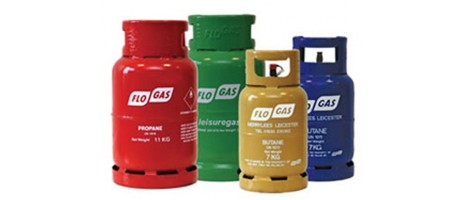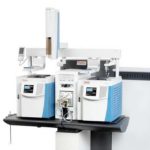- Arian gas company activities in supplying different kinds of industrial, laboratory, and medical gases.
- Arian gas supply imported propane gas with purity 99.9% and 99.95% in 50 lit cylinder (20 kg )
- pure propane gas
- Propane is a three-carbon alkane with the molecular formula C3H8, normally a gas, but compressible to a transportable liquid. A by-product of natural gas processing and petroleum refining, it is commonly used as a fuel for engines, oxy-gas torches, barbecues, portable stoves, and residential central heating. Propane is one of a group of liquefied petroleum gases (LP gases). The others include butane, propylene, butadiene, butylene, isobutylene and mixtures thereof.
- Propane containing too much propene (also called propylene) is not suited for most vehicle fuels. HD-5 is a specification which establishes a maximum concentration of 5% propene in propane. Propane and other LP gas specifications are established in ASTM D-1835. All propane fuels include an odorant, almost always ethanethiol, so that people can easily smell the gas in case of a leak. Propane as HD-5 was originally intended for use as vehicle fuel. HD-5 is currently being used in all propane applications.
- History
- Propane was first identified as a volatile component in gasoline by Walter O. Snelling of the U.S. Bureau of Mines in 1910. The volatility of these lighter hydrocarbons caused them to be known as "wild" because of the high vapor pressures of unrefined gasoline. On March 31, the New York Times reported on Snelling's work with liquefied gas and that "a steel bottle will carry enough gas to light an ordinary home for three weeks."
- It was during this time that Snelling, in cooperation with Frank P. Peterson, Chester Kerr, and Arthur Kerr, created ways to liquefy the LP gases during the refining of natural gasoline. Together they established American Gasol Co., the first commercial marketer of propane. Snelling had produced relatively pure propane by 1911, and on March 25, 1913, his method of processing and producing LP gases was issued patent #1,056,845.[5] A separate method of producing LP gas through compression was created by Frank Peterson and patented[citation needed] in 1912.
- The 1920s saw increased production of LP gas, with the first year of recorded production totaling 223,000 US gallons (840 m3) in 1922. In 1927, annual marketed LP gas production reached 1 million US gallons (3,800 m3), and by 1935, the annual sales of LP gas had reached 56 million US gallons (210,000 m3). Major industry developments in the 1930s included the introduction of railroad tank car transport, gas odorization, and the construction of local bottle-filling plants. The year 1945 marked the first year that annual LP gas sales reached a billion gallons. By 1947, 62% of all U.S. homes had been equipped with either natural gas or propane for cooking.
- In 1950, 1,000 propane-fueled buses were ordered by the Chicago Transit Authority, and by 1958, sales in the U.S. had reached 7 billion US gallons (26,000,000 m3) annually. In 2004 it was reported to be a growing $8-billion to $10-billion industry with over 15 billion US gallons (57,000,000 m3) of propane being used annually in the U.S.
- The "prop-" root found in "propane" and names of other compounds with three-carbon chains was derived from "propionic acid".
- Main applications
- Industries Applications
- Laboratories & analysis
- Propane is used to calibrate environmental emission monitoring, industrial hygiene monitors and trace impurity analyzers, particularly for total hydrocabons measurements (THC).
- Propane could be used as a fuel in atomic absorption analyzers (AAS).
Gas Properties
- Molecular weight : 44.096 g/mol
- Solid phase
- Melting point : -187.7 °C
- Latent heat of fusion (1,013 bar, at triple point) : 94.98 kJ/kg
- Liquid phase
- Liquid density (1.013 bar at boiling point) : 582 kg/m3
- Liquid/gas equivalent (1.013 bar and 15 °C (59 °F)) : 311 vol/vol
- Boiling point (1.013 bar) : -42.1 °C
- Latent heat of vaporization (1.013 bar at boiling point) : 425.31 kJ/kg
- Vapor pressure (at 21 °C or 70 °F) : 8.7 bar
- Critical point
- Critical temperature : 96.6 °C
- Critical pressure : 42.5 bar
- Gaseous phase
- Gas density (1.013 bar at boiling point) : 2.423 kg/m3
- Gas density (1.013 bar and 15 °C (59 °F)) : 1.91 kg/m3
- Compressibility Factor (Z) (1.013 bar and 15 °C (59 °F)) : 0.9821
- Specific gravity (air = 1) (1.013 bar and 21 °C (70 °F)) : 1.55
- Specific volume (1.013 bar and 21 °C (70 °F)) : 0.543 m3/kg
- Heat capacity at constant pressure (Cp) (1 bar and 25 °C (77 °F)) : 0.075 kJ/(mol.K)
- Heat capacity at constant volume (Cv) (1 bar and 25 °C (77 °F)) : 0.066 kJ/(mol.K)
- Ratio of specific heats (Gamma:Cp/Cv) (1 bar and 25 °C (77 °F)) : 1.134441
- Thermal conductivity (1.013 bar and 0 °C (32 °F)) : 15.198 mW/(m.K)
- Safety Data Sheets
- The European Material Safety Data Sheets (MSDS) are made available for information only. Visitors to this site may only use them at their own risk. The MSDSs were prepared by EIGA ( the European Industrial Gas Association) according to European Union standards. Although Air Liquide believes the information in the MSDSs to be correct, Air Liquide cannot be held responsible in any event if the contents do not meet the regulatory requirements of countries outside the European Union. Material Safety Data Sheets are subject to revision. Refer to this web site to ensure that you have the latest version.
- Major Hazards
- Major hazard : Fire
- Toxicity (Am. Conf. Of Gov. Ind. Hygienists ACGIH 2000 Edition) : 2500 ppm
- Flammability limits in air (STP conditions) : 2.2-9.5 vol%
- Odour : Faintly Disagreeable
- UN Number : UN1978
- EINECS Number : 200-827-9
- DOT Label (USA) : FG
- DOT Hazard class (USA) : Flammable Gas
Material compatibility
- Air Liquide has assembled data on the compatibility of gases with materials to assist you in evaluating which products to use for a gas system. Although the information has been compiled from what Air Liquide believes are reliable sources (International Standards: Compatibility of cylinder and valve materials with gas content; Part 1: ISO 11114-1 (Jul 1998), Part 2: ISO 11114-2 (Mar 2001)), it must be used with extreme caution. No raw data such as this can cover all conditions of concentration, temperature, humidity, impurities and aeration. It is therefore recommended that this table is used to choose possible materials and then more extensive investigation and testing is carried out under the specific conditions of use. The collected data mainly concern high pressure applications at ambiant temperature and the safety aspect of material compatibity rather than the quality aspect.


